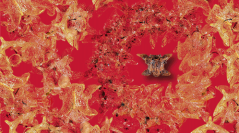

 Geodiversitas
41 (12) - Pages 501-523
Geodiversitas
41 (12) - Pages 501-523Snakes of the family Dipsadidae Bonaparte, 1838 still occur on most of the Lesser Antillean islands, although they have been strongly impacted by modern and historical anthropogenic disturbances as it has been demonstrated for many squamate taxa worldwide. However, these observations mostly rely on modern assemblages, whereas the fossil record of dipsadid snakes, which is the most direct way to assess their past diversity, remains largely understudied. In order to fill this gap we performed a comprehensive review of the dipsadid snake fossils recovered on the Guadeloupe Islands. We identify the fossils on the basis of both qualitative osteological criteria and a morphometric study of the vertebrae. These approaches allow us to recognize three different dipsadid snake taxa, two of which still occur nowadays in Guadeloupe, but have been partly extirpated: Alsophis antillensis (Schlegel, 1837) and Erythrolamprus juliae cf. copeae (Parker, 1936), and a third one that is now extinct (Alsophis sp. 2). In addition, we evaluate previous interpretations of occurrences of snake remains in archaeological deposits. Our conclusions raise questions about the putative consumption of snake meat by past Amerindian populations, which is still far from being clearly demonstrated.
Colubroidae, Caribbean, Amerindian, zooarchaeology, extinction, osteology, palaeontology